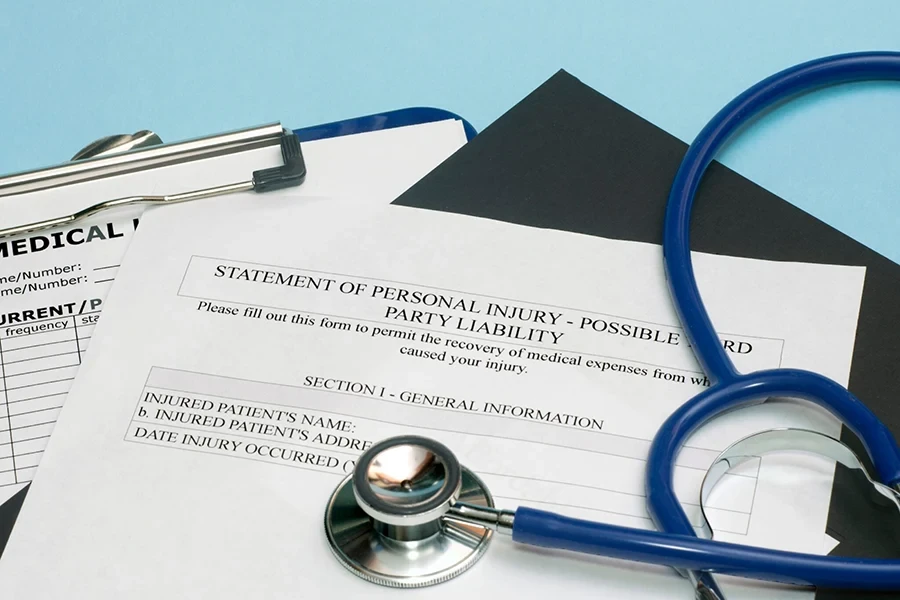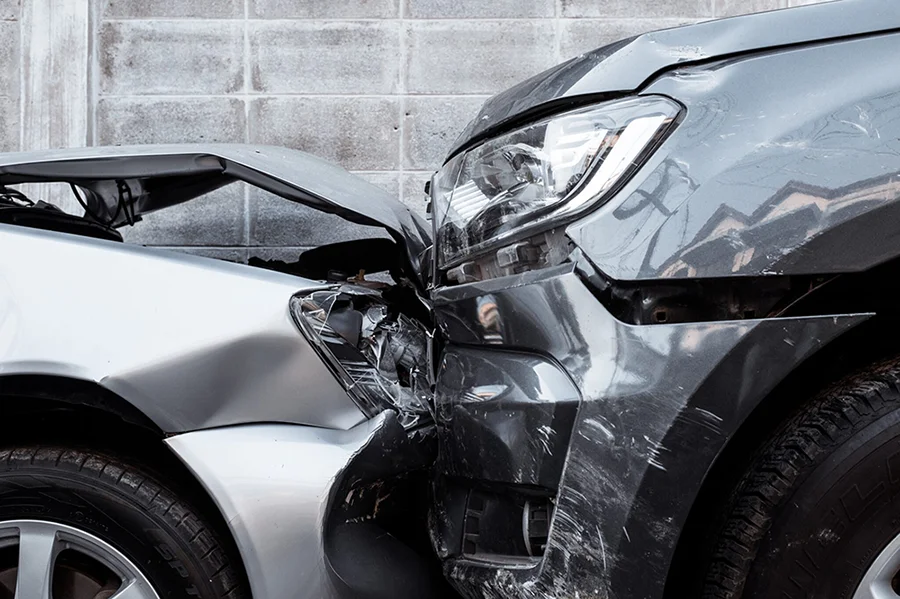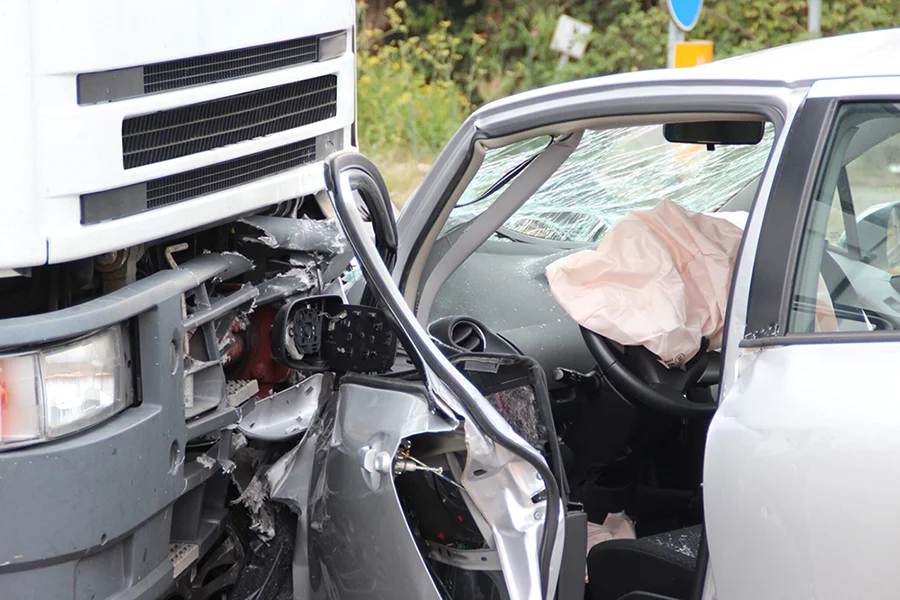Documenting Your Injuries: Why It’s Crucial for Your Personal Injury Case
By: Simon Law | February 7, 2025

When pursuing a personal injury claim, one of the most vital steps you can take is thoroughly documenting your injuries. Comprehensive and accurate records provide tangible proof to support your case and play a critical role in protecting your rights. Proper documentation strengthens your personal injury claim by demonstrating the extent of your injuries and connecting them to the incident, ensuring liability and damages are clearly established. Thoroughly documenting your injuries can make all the difference, whether negotiating with insurance companies or presenting your case in court. Having everything from comprehensive medical records to photos and videos showcasing physical injuries will help you achieve fair compensation.
Understanding the Legal Significance of Injury Records
Injury documentation is more than just a record of physical harm; it’s a cornerstone of the legal process in personal injury cases. Courts, insurance adjusters, and opposing counsel rely heavily on these records to assess the credibility of claims. Proper documentation bridges the gap between your account of events and the physical evidence, providing a complete story that supports your claim.
Accurate documentation helps establish the connection between the injury and the incident, directly influencing negotiations and court decisions. Without sufficient records, your case may lack the evidence to prove its validity, potentially weakening your position.
How Proper Documentation Can Strengthen Your Case
Thorough injury documentation helps build a compelling case in three critical ways:
- Demonstrating Negligence: Clear records show how the at-fault party’s actions led to your injuries.
- Establishing Causation: Thorough records link your injuries directly to the incident, countering arguments about unrelated causes or pre-existing conditions.
- Quantifying Damages: Detailed records capture the extent of your physical, emotional, and financial harm, ensuring that your compensation demands are fully justified.
Incomplete or inconsistent documentation can create doubt and undermine your case. By prioritizing detailed and accurate records, you provide your legal team with the tools it needs to advocate effectively on your behalf.
Types of Injury Documentation: What You Need to Keep Track Of
For a strong personal injury case, gathering a comprehensive range of injury-related records is essential. Organization and accuracy are key. Here are the primary types of documentation you should prioritize:
Medical Records and Their Critical Role
Medical documentation plays a vital role in injury documentation, validating the severity and extent of your injuries and ensuring your claims are credible. This documentation often includes detailed accounts of diagnostic tests, treatment plans, and recovery progress. Consistent medical reporting strengthens your case by providing an established chronological timeline of your injuries and the medical care you have received and may continue to receive.
Emergency Room Reports
Emergency room reports capture the immediate aftermath of your injury. These records document any urgent care attention, initial diagnoses, and administered emergency treatments, directly linking the incident and your injuries. The timeliness of these reports also adds credibility, particularly in cases where immediate medical attention underscores the severity of your injuries. This is also why seeking medical attention immediately after an accident is essential, even if there may not be immediate visible evidence of apparent injuries.
Physician Diagnoses
Presenting official physician diagnoses adds the credibility of professional medical opinions regarding the nature and implications of your injuries. These assessments provide crucial insight into the short-term and long-term health impacts you may experience due to the injury. Regular follow-up diagnoses also reinforce the validity of your claims and demonstrate your commitment to recovery.
Treatment Plans
A detailed treatment plan outlines the medical interventions necessary for your recovery, including medications, therapies, and procedures. These plans are pivotal in establishing the financial damages of your case by showcasing the ongoing medical needs and costs you will incur or have already incurred as a result of the injury.
Ongoing Medical Evaluations
Ongoing medical evaluations are essential for any personal injury cases involving resulting chronic issues or long-term disabilities. These evaluations demonstrate the persistence or progression of injuries over time, reinforcing claims for prolonged suffering and the need for continued care.
Physical Evidence of Injuries
Physical evidence complements medical records by providing clear, tangible proof of the severity and impact of your injuries. It adds visual and contextual support to your case, minimizing disputes and making your claims more compelling during negotiations or court proceedings.
Here’s how different types of physical evidence are presented and utilized in personal injury cases:
Photographic Documentation
Photographs are among the most powerful visual tools for documenting and presenting visible injuries. They can showcase wounds, bruises, swelling, and scarring, offering time-stamped evidence of harm. These photographs can be included in your case file, shared with insurance adjusters, or presented in court to illustrate the injury’s extent.
Ensure your images are clear and time-stamped for the most compelling photographic documentation. Take multiple photos from various angles in proper lighting. Also, be sure to take photos during the healing process. For example, if you sustained deep cuts or burns, photographs can document the progression of healing—or worsening—over time. Images of injuries immediately after the incident and throughout recovery offer a visual timeline that supports medical reports.
Video Evidence
Videos provide dynamic, indisputable evidence of your injuries and their impact on your daily life. They are especially useful for documenting motion-related limitations, such as difficulty walking or restricted range of motion, that cannot be captured in still photography. Videos at the scene of the incident can also capture hazardous conditions to add more support to your claim.
Utilize videos to show restricted movement, difficulty performing routine tasks, or pain while walking. For example, if you suffered a back injury, a video could capture your struggles with bending or lifting objects, further reinforcing your claim for physical impairments. Videos are often submitted as part of evidence packets or played during court presentations.
Detailed Written Descriptions
Detailed written descriptions are another way to convey the nature and progression of your injuries. They can help provide context to accompanying visual evidence, outlining the nature, timeline, and progressions of your injuries. These descriptions can help humanize your case and offer a more comprehensive view of your suffering.
Keep a pain journal or injury log to detail specific dates, pain levels, symptoms, and the emotional toll your injuries have taken over time. Pairing this with photographic or video evidence helps tell the whole story of life after an incident.
Physical Demonstrations in Court
In some cases, plaintiffs may physically demonstrate the extent of their injuries during a trial. For instance, a plaintiff might be asked to walk, raise their arms, or perform another activity to illustrate ongoing limitations directly to the judge or jury.
Immediate Steps After an Injury
Taking the proper steps immediately after an injury can significantly impact your case. Here’s what you should do in the event of an injury:
- Seek Prompt Medical Attention: Linking your injuries to the incident requires timely evaluation by a medical professional and will ensure you have initial medical documentation should you require it for your case.
- Collect Evidence: Document the scene with photos and videos, gather witness statements, and retain any physical evidence.
- Contact a Personal Injury Lawyer: Legal guidance is crucial to collect and preserve all necessary documentation.
Delays in these actions can harm your case’s credibility and make it more challenging to prove causation.
Seeking Prompt Medical Attention
Prompt medical attention is critical for personal injury cases. Early evaluation ensures you receive the necessary care and establishes a clear connection between your injuries and the incident. Delayed treatment may raise questions about the cause or severity of your injuries, giving opposing counsel room to challenge your claims.
Why Delay Can Harm Your Case
Delaying medical treatment or failing to document injuries promptly can significantly weaken your case. It allows the defense to argue that your injuries resulted from unrelated events or were not severe enough to warrant immediate care. Quick action minimizes these risks and solidifies your claim.
Legal Considerations
Injury documentation is critical in helping lawyers build strong cases. Consistency across records is essential to avoid undermining your claims and ensure that your case holds up during negotiations or in court.
Why Documentation Matters to Your Lawyer
Thorough documentation is the foundation of a strong legal strategy in personal injury cases. Whether your claim involves a slip-and-fall under premises liability or injuries sustained in a car accident, your lawyer relies on accurate records to establish key elements of your case: negligence, causation, and damages. Injury documentation, like medical reports and photographic evidence, demonstrates the extent of harm and solidifies causation.
Establishing Damages
Injury records are essential for quantifying both economic and non-economic damages. Medical bills, treatment plans, and ongoing evaluations provide concrete evidence of financial harm, while personal accounts and evidence of pain and suffering demonstrate the emotional toll.
For example, in cases of personal injury related to car accidents, comprehensive documentation is critical for countering insurance companies’ attempts to minimize or deny claims. Emergency room records, physician diagnoses, detailed descriptions of injuries, medical expenses, and lost wages can effectively link your physical harm to the crash, demonstrate the other driver’s negligence, and support your claims to recoup the financial burdens you’ve had to shoulder.
Proving Causation
Comprehensive documentation ties your injuries directly to the incident, countering claims of pre-existing conditions or unrelated causes. A well-documented timeline strengthens this link and reinforces your credibility.
For instance, in premises liability cases, injury documentation can prove that unsafe conditions, like a wet floor or broken stairs, directly caused your accident. Supporting evidence, including photos of the hazard and witness statements, provides further validation, making it harder for property owners to dispute their responsibility.
Supporting Compensation Claims
Clear, thorough documentation minimizes disputes and strengthens your demands for fair compensation. Your lawyer will use documentation as evidence to negotiate with insurers and prepare persuasive arguments should your case go to court. Prioritizing accurate, detailed records empowers your legal team to fight for fair compensation in your case.
Contact the Personal Injury Lawyers at Simon Law
If you’ve been injured and need help documenting your case, Simon Law is here to help. Working with an experienced personal injury attorney with the Simon Law team ensures you receive guidance through the process, protecting your rights and making your case as strong as possible. Contact us today to schedule your complimentary consultation.


